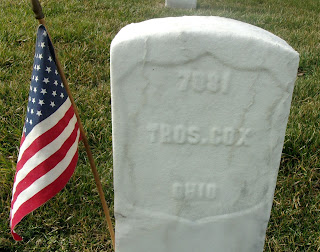According to an article describing the life and descendants
of Lydia Holliday in the monthly publication “The Echoer” dated 1 Aug 1970, she
began her work as a volunteer field nurse in the hospitals of the Union Army in
the spring of 1861. She was nearly 60 years old.
“…she began her work by first appearing at Camp Carlile
(sic) on Wheeling Island Winchester and Washington , D.C.
After the war, Lydia was active in the Woman’s
Relief Corps, an auxiliary to the Grand Army of the Republic. The Wheeling , West
Virginia
Mother Holliday was a kind and simple soul who sent three
sons to war and decided to offer her nursing skills to Union
and Confederate soldiers alike without compensation.
During her later years, as a widow and with only three of
her seven children living, she became destitute and in need of financial
support. At age 90, she “made a declaration for the purpose of being placed on
the pension roll of the United
States ” (National Archives Pension File, 5
Aug 1892). As she had not been officially hired by the United States medical
service, her pension was initially denied. Along with her personal declaration,
four others (including a military physician and a Lt. Colonel) who knew of her
work offered affidavits to her cause to the State of West Virginia .
On 23 Feb 1897, “An Act Granting a pension to Lydia W
Holliday” was passed by Congress:
“Be it enacted by the Senate and House of Representatives of
the United States of America in Congress assembled, That the Secretary of the
Interior be, and is hereby, authorized and directed to place the name of Lydia
W Holliday, of Wheeling, Ohio County, West Virginia, late army nurse in the
army hospitals of the United States Volunteers, in the late war, from eighteen
hundred and sixty-one to eighteen hundred and sixty-five, on the pension roll,
at twenty dollars per month from and after the passage of the Act” (National
Archives).
She died 5 Oct 1899 of “old age and prostration” per West
Virginia Death Records.
She was 97 years old. She is buried next to her husband among
many members of her family at Mount Wood Cemetery ,
Wheeling , West
Virginia Ohio River . Rest in Peace from your thankful 3rd great-granddaughter, also a nurse.




















